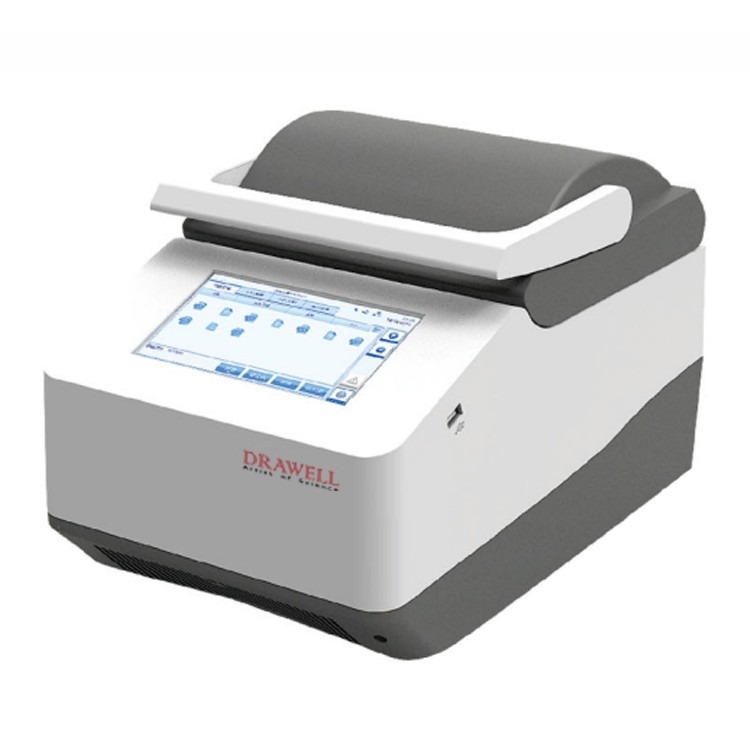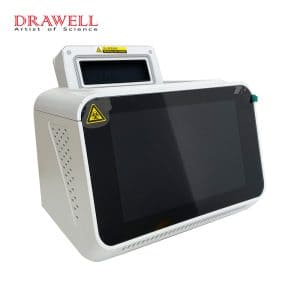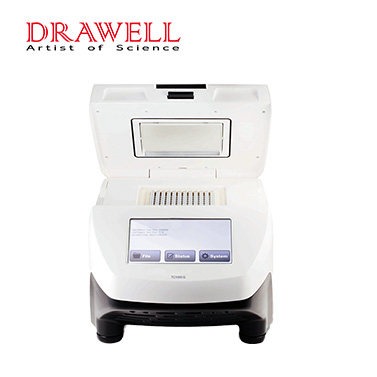Quantitative PCR, often abbreviated as qPCR, also known as real-time PCR, is a powerful and versatile technique in molecular biology that allows researchers to amplify and quantify DNA sequences. Its ability to measure the amount of target DNA in real-time has made qPCR an indispensable tool in diagnostics, research, and many other scientific fields. This article explores the fundamental principles, types, applications, and future directions of Quantitative PCR.
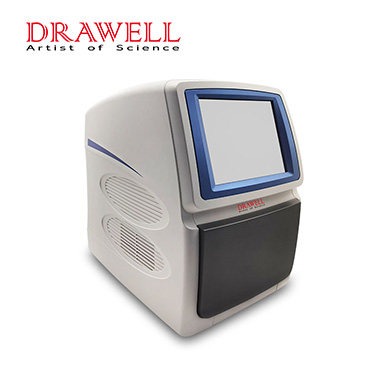
How Quantitative PCR Works
Quantitative PCR combines the principles of traditional Polymerase Chain Reaction (PCR) with real-time detection, allowing for the simultaneous amplification and quantification of a specific DNA sequence.
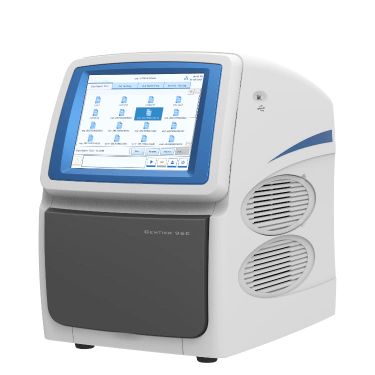
1. Sample Preparation
The process begins with the extraction of DNA from the sample. This DNA can come from various sources, such as cells, tissues, blood, or environmental samples. The extracted DNA serves as the template for the qPCR.
2. Reaction Setup
The qPCR reaction mixture includes:
- Template DNA: The DNA sample to be amplified.
- Primers: Short, synthetic DNA sequences that are complementary to the target DNA region. They provide a starting point for DNA synthesis.
- DNA Polymerase: An enzyme that synthesizes new DNA strands by adding nucleotides to the primers.
- Nucleotides (dNTPs): The building blocks for new DNA strands.
- Fluorescent Dye or Probes: These are used for real-time detection of DNA amplification. There are two main types:
- SYBR Green Dye: Binds to double-stranded DNA and fluoresces upon binding.
- TaqMan Probes: Sequence-specific probes labeled with a fluorescent reporter and a quencher.
3. Thermal Cycling
The qPCR machine, also known as a thermal cycler, cycles the reaction mixture through a series of temperature changes. Each cycle consists of three main steps:
- Denaturation: The reaction mixture is heated to around 95°C to separate the double-stranded DNA into single strands.
- Annealing: The temperature is lowered to about 50-65°C to allow the primers to bind (anneal) to their complementary sequences on the single-stranded DNA.
- Extension: The temperature is raised to about 72°C, the optimal temperature for DNA polymerase to add nucleotides to the primers, synthesizing new DNA strands.
This process is repeated for 30-40 cycles, leading to exponential amplification of the target DNA sequence.
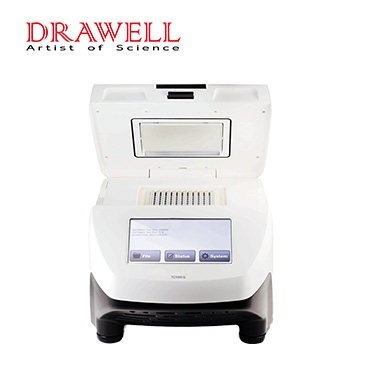
4. Real-Time Detection
During each cycle, the increase in DNA is monitored in real-time using fluorescent signals:
- SYBR Green Method: As SYBR Green binds to the newly formed double-stranded DNA, it emits fluorescence. The fluorescence intensity increases with each cycle, corresponding to the amount of amplified DNA.
- TaqMan Method: When the DNA polymerase encounters the TaqMan probe during extension, it cleaves the probe, separating the fluorescent reporter from the quencher. This separation results in an increase in fluorescence proportional to the amount of DNA synthesized.
5. Quantification
The fluorescence data are collected and analyzed using specialized software. The software generates a quantification cycle (Cq) or threshold cycle (Ct) value for each sample. The Cq/Ct value is the cycle number at which the fluorescence signal exceeds a predefined threshold, indicating a significant amount of DNA has been produced.
6. Data Analysis
Quantification of the initial amount of DNA in the sample is achieved by comparing the Cq/Ct values to a standard curve. The standard curve is generated using serial dilutions of a known quantity of the target DNA. This allows for the calculation of the starting quantity of the target DNA in unknown samples based on their Cq/Ct values.
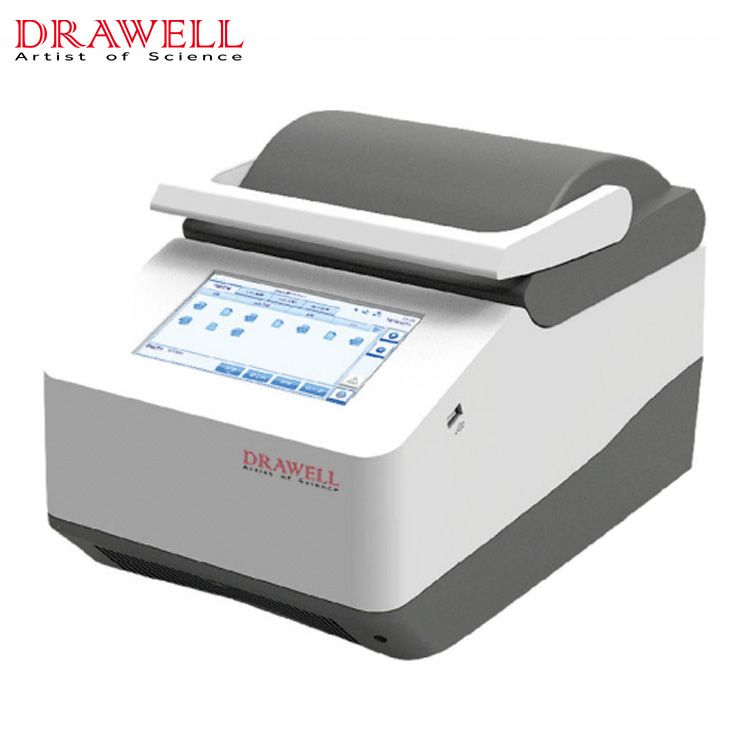
Types of Quantitative PCR
There are two primary types of qPCR based on the detection method:
SYBR Green qPCR
This method uses SYBR Green dye, which binds to double-stranded DNA and fluoresces upon binding. It is a cost-effective and straightforward approach but can bind to non-specific products, requiring careful primer design to ensure specificity.
TaqMan qPCR
This method employs sequence-specific probes labeled with a fluorescent reporter and a quencher. During amplification, the probe is cleaved, separating the reporter from the quencher and generating a fluorescent signal. TaqMan qPCR offers high specificity and is suitable for multiplexing, allowing simultaneous quantification of multiple targets.
Applications of Quantitative PCR
Quantitative PCR (qPCR) is a versatile and powerful technique used for amplifying and quantifying DNA sequences. Its precision, sensitivity, and real-time detection capabilities have made it indispensable in various fields.
1. Medical Diagnostics
- Pathogen Detection and Quantification: Quantitative PCR is widely used for detecting and quantifying pathogens, including bacteria, viruses, and fungi. It is crucial in diagnosing infectious diseases, monitoring disease progression, and evaluating treatment efficacy. For example, qPCR is used to detect and quantify viral loads in patients with HIV, hepatitis B and C, and COVID-19.
- Genetic Testing: qPCR is employed to detect genetic mutations, single nucleotide polymorphisms (SNPs), and copy number variations (CNVs) associated with various genetic disorders. It aids in diagnosing conditions such as cystic fibrosis, Huntington’s disease, and certain types of cancer.
- Prenatal Screening: Non-invasive prenatal testing (NIPT) uses qPCR to screen for chromosomal abnormalities such as Down syndrome (trisomy 21), Edwards syndrome (trisomy 18), and Patau syndrome (trisomy 13).
2. Gene Expression Analysis
- Quantifying Gene Expression Levels: qPCR is used to measure the expression levels of specific genes under various conditions, providing insights into gene function, regulation, and the molecular mechanisms underlying biological processes. This application is essential in research fields such as developmental biology, oncology, and neuroscience.
- Comparative Analysis: Researchers use qPCR to compare gene expression profiles between different samples, such as healthy vs. diseased tissues or treated vs. untreated cells, to identify biomarkers and therapeutic targets.
3. Genetic Research
- Genotyping: qPCR is employed to identify genetic variants, including SNPs and CNVs. It helps in studying genetic diversity, inheritance patterns, and the association of genetic variants with diseases.
- Mutation Detection: qPCR is used to detect specific mutations in genes that are associated with cancer and other diseases. This information is crucial for personalized medicine, where treatments are tailored based on the patient’s genetic profile.
- Epigenetic Studies: Quantitative PCR can be used to study DNA methylation patterns, which play a role in gene regulation and are associated with various diseases, including cancer.
4. Forensic Science
- DNA Profiling: qPCR is a critical tool in forensic science for DNA profiling. It is used to amplify and quantify DNA from crime scene samples, such as blood, saliva, or hair, enabling the identification of individuals based on their genetic profiles.
- Paternity Testing: qPCR is used to establish biological relationships by comparing DNA profiles of parents and children. This application is widely used in legal and immigration cases.
- Degraded Sample Analysis: qPCR can amplify minute amounts of DNA from degraded samples, making it valuable in analyzing historical and archaeological specimens.
5. Environmental Science
- Microbial Monitoring: qPCR is used to detect and quantify microorganisms in environmental samples, such as water, soil, and air. This application is essential for monitoring microbial contamination, assessing water quality, and studying microbial ecology.
- Biodiversity Studies: qPCR helps in assessing biodiversity by quantifying specific DNA sequences from different species within environmental samples. It is used to monitor ecosystem health and track changes in species populations.
- GMO Detection: qPCR is employed to detect and quantify genetically modified organisms (GMOs) in food and agricultural products, ensuring compliance with regulatory standards.
6. Food Safety and Quality Control
- Pathogen Detection: qPCR is used to detect and quantify foodborne pathogens, such as Salmonella, Listeria, and E. coli, ensuring food safety and preventing outbreaks of foodborne illnesses.
- Authenticity Testing: qPCR helps in verifying the authenticity of food products by detecting specific DNA sequences that indicate the presence of particular species, such as identifying horse meat in beef products.
- Allergen Detection: Quantitative PCR is used to detect and quantify allergens in food products, helping to protect consumers with food allergies.
7. Agricultural Biotechnology
- Plant Pathogen Detection: qPCR is used to detect and quantify plant pathogens, including viruses, bacteria, and fungi, enabling early diagnosis and management of plant diseases.
- Trait Screening: qPCR is employed to screen for specific genetic traits in crops, such as herbicide resistance or drought tolerance, aiding in the development of genetically modified crops.
- Microbial Symbiosis Studies: Quantitative PCR helps in studying the interactions between plants and beneficial microorganisms, such as mycorrhizal fungi and nitrogen-fixing bacteria, which are essential for sustainable agriculture.
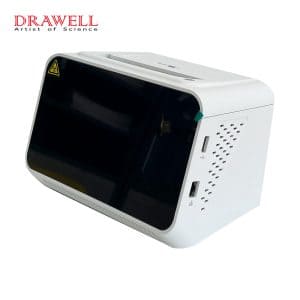
Future Advancements in Quantitative PCR
As technology progresses, several promising advancements are set to enhance the capabilities, efficiency, and applications of Quantitative PCR.
1. Digital PCR (dPCR)
Overview: Digital PCR represents a significant advancement over traditional qPCR. By partitioning a sample into thousands of individual reactions, dPCR allows for the absolute quantification of target DNA without the need for standard curves.
Advantages
- Higher Precision and Sensitivity: dPCR can detect and quantify low-abundance targets with higher accuracy, making it ideal for rare mutation detection and single-cell analysis.
- Absolute Quantification: Provides direct quantification of DNA molecules, eliminating variability associated with standard curves.
Future Directions
- Integration with Microfluidics: Developing more robust and scalable microfluidic platforms to streamline the partitioning process and reduce costs.
- Enhanced Multiplexing: Improving the ability to simultaneously quantify multiple targets within a single dPCR assay.
2. Enhanced Multiplexing Capabilities
Overview: Multiplexing allows the simultaneous quantification of multiple target sequences in a single reaction, increasing throughput and reducing costs.
Advantages
- Increased Efficiency: Reduces the number of reactions needed, saving time and reagents.
- Comprehensive Analysis: Enables the study of multiple genes or pathogens in a single assay.
Future Directions
- Advanced Fluorescent Dyes and Probes: Development of new fluorescent dyes and probes with minimal spectral overlap to enhance multiplexing capacity.
- Software Improvements: Enhanced data analysis software to deconvolute complex multiplexing data more accurately and efficiently.
3. Point-of-Care Testing (POCT)
Overview: Portable qPCR devices are being developed for rapid, on-site diagnostics, making molecular testing more accessible in clinical and field settings.
Advantages
- Rapid Results: Provides quick turnaround times for diagnostic results, crucial for timely decision-making in clinical settings.
- Accessibility: Facilitates molecular diagnostics in remote or resource-limited areas.
Future Directions
Miniaturization and Integration: Further miniaturizing qPCR devices and integrating them with user-friendly interfaces and automated sample processing.
Connectivity and Data Sharing: Incorporating wireless connectivity for data sharing and integration with electronic health records (EHRs) for seamless patient management.
4. CRISPR-Based qPCR
Overview: Combining CRISPR technology with qPCR enhances specificity and sensitivity in detecting nucleic acids. CRISPR-based detection leverages the precision of CRISPR-Cas systems to identify specific DNA or RNA sequences.
Advantages
- High Specificity: CRISPR-Cas systems can be programmed to target virtually any DNA sequence, reducing off-target effects.
- Versatility: Applicable to a wide range of targets, including difficult-to-detect sequences.
Future Directions
- Development of New CRISPR Systems: Exploring different Cas proteins with unique properties to expand the range of detectable targets.
- Commercialization and Standardization: Developing standardized CRISPR-based qPCR kits for various applications.
5. Automation and High-Throughput qPCR
Overview: Automation and high-throughput capabilities are essential for scaling up qPCR assays, particularly in large-scale studies and diagnostic laboratories.
Advantages
- Increased Throughput: Enables the processing of thousands of samples simultaneously, increasing efficiency and productivity.
- Reduced Human Error: Automation minimizes manual handling, reducing the potential for human error and contamination.
Future Directions
- Robotics Integration: Implementing advanced robotic systems for fully automated sample preparation, reaction setup, and data analysis.
- Lab-on-a-Chip Technologies: Developing integrated lab-on-a-chip platforms that combine qPCR with sample preparation and analysis in a single device.
6. Improved Data Analysis and Interpretation
Overview: Advances in data analysis software and bioinformatics are crucial for interpreting the complex data generated by qPCR assays, especially in high-throughput and multiplexing applications.
Advantages
- Enhanced Accuracy: Improved algorithms and machine learning techniques can provide more accurate and reliable quantification.
- Comprehensive Analysis: Advanced software can integrate qPCR data with other molecular data, providing a holistic view of the biological system under study.
Future Directions
- Machine Learning and AI: Leveraging artificial intelligence and machine learning to analyze qPCR data, predict outcomes, and identify patterns that may not be apparent through traditional analysis methods.
- Cloud-Based Platforms: Developing cloud-based platforms for data storage, analysis, and sharing, facilitating collaboration and data integration across different research groups and institutions.
Conclusion
Quantitative PCR has revolutionized molecular biology by providing a robust, sensitive, and precise method for DNA quantification. Its applications span diagnostics, research, forensics, and environmental science, highlighting its importance in modern science.

